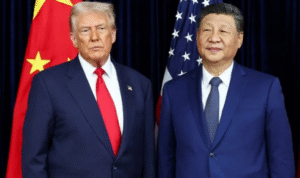Trump Acknowledges U.S. Law Bars Him From Seeking a Third Presidential Term
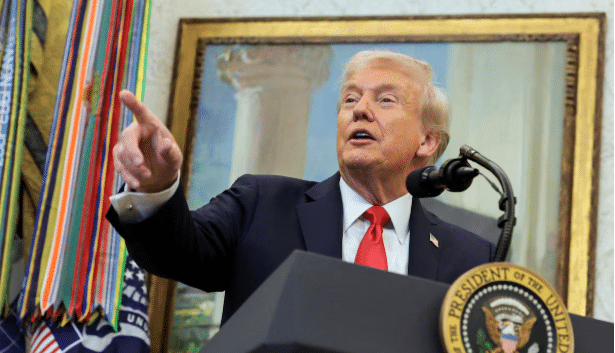
Meta Description:
U.S. President Donald Trump confirms that the Constitution prevents him from pursuing a third term in office, ending speculation about a potential 2028 campaign. Here’s a detailed look at his remarks, legal context, political reactions, and what it means for America’s future leadership.
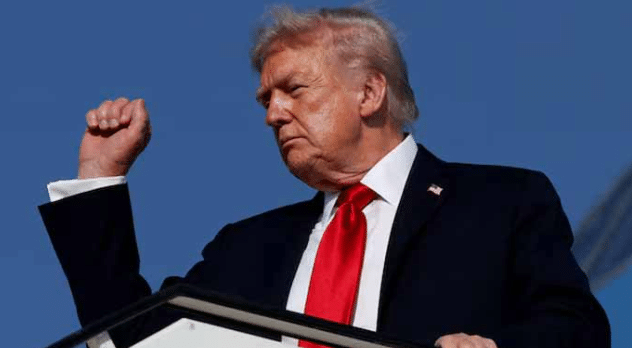
Introduction
In a move that puts months of speculation to rest, U.S. President Donald Trump has openly stated that he cannot legally run for a third presidential term, citing constitutional limits. Speaking aboard Air Force One while traveling to South Korea, Trump acknowledged that the 22nd Amendment of the U.S. Constitution explicitly restricts presidents to two elected terms.
His comments mark a notable shift from earlier ambiguity on the issue. For months, Trump had fueled intrigue — and controversy — by hinting at the possibility of a third run, even selling “Trump 2028” merchandise and making remarks that left supporters guessing about his long-term political ambitions.
Now, however, his statement signals a recognition of the legal boundary that defines one of America’s most enduring democratic principles: the peaceful transfer of power and the limitation of presidential tenure.
“If You Read It, It’s Pretty Clear”
During his press conference, Trump candidly told reporters:
“If you read it, it’s pretty clear — I’m not allowed to run. It’s too bad.”
The statement appeared to close the door on any immediate attempts to challenge or reinterpret the 22nd Amendment, which has governed presidential term limits since 1951. Trump, who secured re-election in 2024, will complete his second term in January 2029.
Observers view his acknowledgment as a pragmatic response to growing political and constitutional discussions about the feasibility — or legality — of extending presidential tenure beyond two terms.
The 22nd Amendment: A Safeguard Against Lifelong Presidencies
Historical Context
The 22nd Amendment was ratified in 1951, following Franklin D. Roosevelt’s unprecedented four terms in office. Concerned that unlimited presidential terms could pave the way for authoritarianism, lawmakers established a firm two-term limit for all future presidents.
The Legal Restriction
The Amendment’s language is unambiguous:
“No person shall be elected to the office of the President more than twice.”
This clause leaves no constitutional loophole for a third election victory, making Trump’s acknowledgment a direct acceptance of legal reality. While the Constitution allows for succession in extraordinary circumstances (e.g., vice-presidential ascension), it firmly prohibits a third election win.
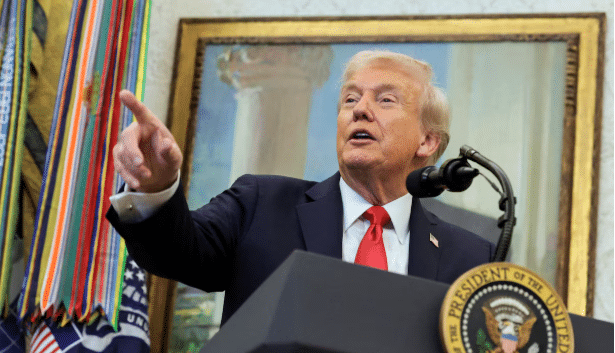
A Shift From Earlier Ambiguity
Trump’s latest remarks contrast sharply with his earlier rhetoric. Over the past year, he had often entertained — sometimes jokingly, sometimes provocatively — the idea of staying in office beyond 2029. During rallies, he teased supporters with phrases like “Maybe we’ll have to stick around a little longer” and even marketed “Trump 2028” campaign merchandise.
Political analysts interpret these comments as part of Trump’s signature brand of populist showmanship — using humor and provocation to energize his base and unsettle opponents. However, until now, he had never clearly ruled out the possibility of a third run.
His statement aboard Air Force One thus represents a significant pivot, aligning public discourse with constitutional reality.
House Speaker Mike Johnson Weighs In
U.S. House Speaker Mike Johnson offered a practical assessment of the situation earlier this week. Speaking to reporters, Johnson said he had discussed the matter personally with Trump and concluded that a constitutional amendment to allow a third term was virtually impossible within the current timeframe.
“It’s been a great run,” Johnson remarked. “But the president knows — and he and I have talked about — the constrictions of the Constitution.”
Johnson emphasized that the process to amend the Constitution is intentionally rigorous. It requires a two-thirds majority in both the House and Senate, followed by ratification from three-fourths of U.S. states. In practice, this would likely take a decade or more — well beyond the 2028 election cycle.
“I don’t see the path for that,” he added. “It’s just not realistic.”
Trump’s Allies Still Flirting With Legal Theories
Despite Trump’s acknowledgment, several of his longtime allies have continued to challenge the two-term limit on theoretical grounds. Former White House strategist Steve Bannon and other pro-Trump commentators have floated creative — and controversial — interpretations of the 22nd Amendment, suggesting possible legal loopholes or executive exemptions.
Most constitutional scholars, however, reject these arguments outright. Legal experts across the political spectrum agree that the amendment’s language leaves no room for reinterpretation.
Constitutional law professor Laurence Tribe of Harvard University notes, “The 22nd Amendment was drafted specifically to prevent any president, no matter how popular, from monopolizing power. There’s no legal ambiguity — only political theater.”
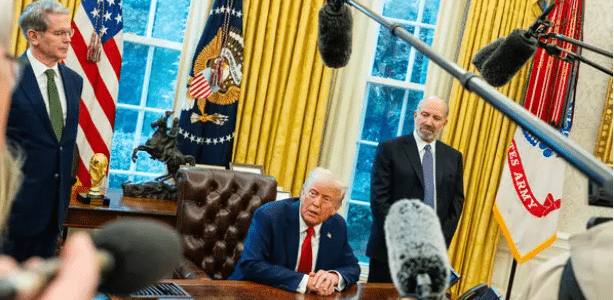
Political Theater and “Trump 2028” Merchandise
While Trump’s rallies often feature bold slogans and provocative imagery, insiders acknowledge that much of the “third-term talk” was meant for political effect rather than policy intent.
Speaker Johnson described the marketing of “Trump 2028” hats and shirts as “trolling the Democrats”, saying that the president enjoys “watching their hair catch fire” over hypothetical scenarios. Trump’s team, known for its savvy merchandising strategies, has turned such controversies into lucrative branding opportunities, generating enthusiasm and small-donor fundraising momentum.
Political analysts note that these gestures play into Trump’s strength as a populist communicator — keeping his name in the headlines and his supporters emotionally invested, even when the topic itself is constitutionally impossible.
Trump’s Focus on 2028 Republican Successors
With the door to a third term now seemingly closed, Trump has begun highlighting potential successors within the Republican Party. During recent interviews and speeches, he mentioned Vice President JD Vance and Secretary of State Marco Rubio as leading contenders for the 2028 presidential election.
Both figures have been prominent in the administration and enjoy strong support among conservative voters. Vance, a rising political star and bestselling author, represents the populist, working-class segment of Trump’s base. Rubio, a veteran lawmaker with extensive foreign policy experience, appeals to more traditional Republican voters.
Trump’s endorsement — or even implied support — could play a decisive role in shaping the GOP’s 2028 nomination process.
The Age Factor: Trump Would Be 82 in 2028
If Trump were to hypothetically run again in 2028, he would be 82 years old, making him the oldest president in U.S. history. Although age has become less of a political barrier in modern American politics, physical and cognitive fitness remain significant considerations for voters and party strategists alike.
By acknowledging constitutional limits now, Trump avoids questions about his age and longevity while preserving his political legacy as the leader who reshaped Republican politics and reclaimed the presidency in 2024.
The Constitutional Amendment Challenge
How an Amendment Works
Changing the U.S. Constitution is one of the most difficult political tasks imaginable. It involves a multi-step process requiring broad bipartisan support:
- Proposal Stage – Approval by two-thirds of both chambers of Congress, or by a constitutional convention called by two-thirds of state legislatures.
- Ratification Stage – Approval by three-fourths of state legislatures or state conventions.
- Implementation Stage – Formal certification and inclusion in the Constitution.
Historically, very few amendments have succeeded. Since 1789, only 27 amendments have been ratified — the last being in 1992. Experts estimate that, even with unanimous party backing, a third-term amendment would take years to pass.
Political Impossibility
Given America’s deep political polarization, achieving such widespread agreement is highly improbable. Even Trump’s closest allies acknowledge that it would be an uphill battle.
“It’s a non-starter,” said political analyst David Frum. “There’s simply no appetite, even among Republicans, for rewriting one of the core safeguards of American democracy.”

How Trump’s Acknowledgment Shapes the Political Landscape
Ending Speculation, Refocusing Strategy
By confirming his adherence to constitutional limits, Trump effectively redirects media attention toward his ongoing presidency rather than hypothetical future runs. His administration can now focus more squarely on policy achievements, economic goals, and foreign relations during his remaining years in office.
It also allows the Republican Party to prepare for the post-Trump era in a structured, strategic manner — without internal divisions over succession timing.
Strengthening the GOP’s Institutional Credibility
Some party strategists believe Trump’s acknowledgment of constitutional restraint enhances the Republican Party’s institutional image. After years of being portrayed by critics as defying democratic norms, this statement reinforces a commitment to rule of law and constitutional order.
“It sends the message that Trump respects the system, even if he often challenges it,” said GOP consultant Sarah Longwell. “That’s a stabilizing signal heading into the next phase of his presidency.”
Public Reaction and Media Response
Supporters Praise His “Realism”
Trump’s core supporters largely interpreted his comments as a moment of maturity and leadership. Social media reactions from conservative circles praised him for “acknowledging reality” while maintaining his signature confidence.
Online communities noted that Trump’s statement does not diminish his influence — rather, it positions him as a kingmaker who will shape the Republican Party’s future direction.
Critics See a “Political Calculation”
Opponents, on the other hand, view the announcement as a calculated move designed to preempt criticism and shift the national conversation away from constitutional controversies. Several Democratic commentators argued that Trump’s flirtation with the idea of a third term was always a political distraction meant to rile opponents and dominate media cycles.
Either way, the outcome is clear: the legal debate has been settled, at least for now.
Looking Ahead: The 2028 Election and GOP Transition
With the third-term question finally laid to rest, the 2028 presidential election is shaping up to be one of the most competitive in recent memory. Within Republican circles, figures like JD Vance, Marco Rubio, and Florida Governor Ron DeSantis are expected to be central players.
Trump’s endorsement will likely carry significant weight. Even without running, he remains the most influential Republican figure in decades — capable of mobilizing massive voter turnout and shaping party platforms.
Political analysts suggest that Trump may assume a “mentor” or “elder statesman” role within the GOP, guiding policy direction while allowing a new generation of conservative leaders to emerge.
Constitutional Integrity and Democratic Continuity
The United States has prided itself for more than two centuries on a stable system of constitutional governance. The two-term presidential limit has become a cornerstone of that stability, ensuring the cyclical renewal of leadership and preventing power concentration.
Trump’s acknowledgment reaffirms this foundational principle — that even the most powerful leader is bound by law. In doing so, he joins a long line of presidents who respected the constitutional limits of their office, from Dwight Eisenhower to Barack Obama.
Conclusion: The End of Speculation, the Start of Legacy
President Donald Trump’s clear admission that U.S. law bars him from pursuing a third term may mark the end of one debate — but it opens another: what his political legacy will look like after 2029.
For supporters, he remains a transformative figure who defied expectations, reshaped the political landscape, and revived conservative populism. For critics, his tenure continues to raise questions about the balance between charisma and constitutional constraint.
Either way, by recognizing the authority of the Constitution, Trump has taken a step toward reinforcing America’s democratic continuity — a gesture that history will likely remember as both pragmatic and symbolic.
Suggested Internal Linking for SEO
- Related Article: “The 22nd Amendment Explained: Why U.S. Presidents Can Only Serve Two Terms”
- Related Article: “Trump’s Second Term Agenda: Economic Policy, Foreign Relations, and Legacy”
- Related Article: “Who Will Lead the Republican Party After Trump? A Look at 2028 GOP Contenders”
